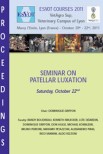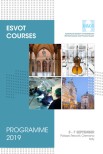Objective: To compare unilaterally plated (UP) constructs and orthogonally plated (OP) constructs of differing sizes (3.5 mm + 2.0 mm locking plates [OP2.0], 3.5 mm + 2.4 mm locking plates [OP2.4] and 3.5 mm + 3.0 mm locking plates [OP3.0]) under cyclic and static axial compression load to failure testing using a fracture gap model.
Study design: In vitro experimental biomechanical study.
Sample population: Acetal homopolymer (Delrin) rods stabilized with locking plates and screws (Arthrex OrthoLine).
Methods: One of four stabilization techniques (UP, OP2.0, OP2.4, OP3.0) was applied to rods with a fixed fracture gap. Constructs were fatigue tested under axial compression (90,000 cycles; 4-196 N) followed by static load to failure. Cyclic displacement was evaluated after the first, middle, and last 100 cycles. Stiffness and strength were analyzed during static axial compression load to failure.
Results: During cyclic testing, UP experienced 3.5, 3.8, and 4.1 times the gap strain of OP2.0, OP2.4, and OP3.0, respectively (p < 0.0075). Fatigue and construct design had significant effects on displacement (p < .0001). OP2.0, OP2.4, and OP3.0 demonstrated 2.5, 3.0, and 4.1 times the strength and 3.0, 3.6, and 4.2 times the stiffness of UP, respectively (p < .0002).
Conclusion: In the present in vitro fracture gap model, OP constructs were stronger and stiffer than UP under dynamic and static axial compression, and OP stiffness increased with increasing implant size.
Clinical significance: The results of this study demonstrate objective biomechanical advantages of OP compared to UP. Based on these results, orthogonal plating can be considered when increased fixation strength and stiffness are warranted.









